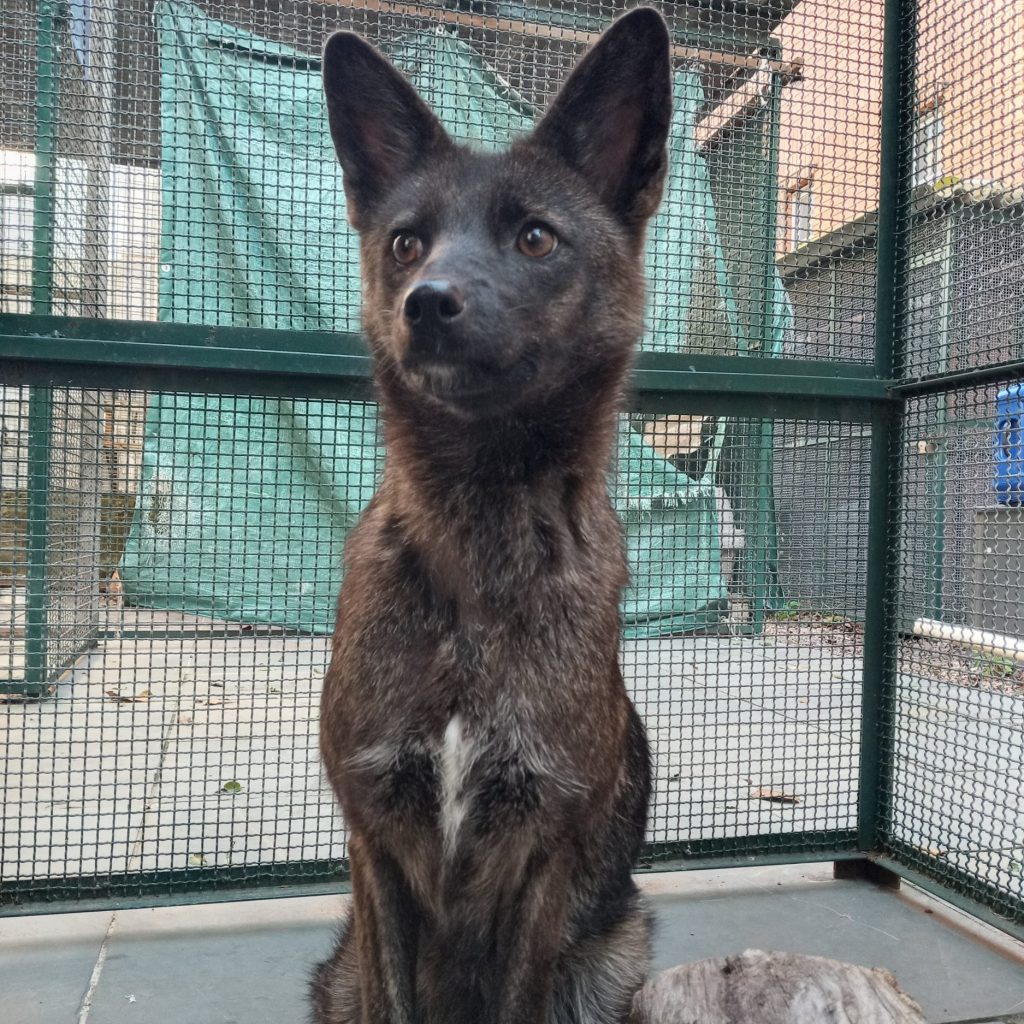In the Brazilian wilderness, researchers have made an extraordinary discovery: the world’s first confirmed dog-fox hybrid.
The animal was involved in a car accident in the Vacaria region in 2021 and was subsequently brought to a veterinary hospital for treatment. However, the medical staff faced a puzzling challenge in determining whether the creature was a fox or a dog due to its unusual physical traits, which displayed a combination of both dog-like and fox-like characteristics.
Scientists from local universities became intrigued by this enigmatic hybrid and decided to analyze its genes. Their research, recently published, revealed that the hybrid’s mother was a pampas fox, while its father was an unknown breed of domestic dog. This marks the first documented instance of a fox and a dog interbreeding.

The hybrid, named “graxorra” and “dogxim” by caregivers and researchers, displayed physical attributes resembling both a medium-sized dog and a fox. It had large, pointed ears, a long snout with a jet black nose, and bulging brown eyes set into a thick, wiry black-brown coat speckled with white and grey.
“Graxorra” is a fusion of “graxaim-do-campo,” the Portuguese name for the pampas fox, and “cachorra,” meaning female dog in Portuguese. “Dogxim” combines “dog” with “xim” from “graxaim-do-campo.”
The hybrid not only looked like a combination of a dog and a fox but also exhibited behavioral traits characteristic of both species. It refused conventional food and preferred to consume live rodents, barked like a dog, but had the thick, dark coat of a fox. It was initially wary of people but gradually warmed up to them over time.

Flávia Ferrari, a conservationist who worked with the hybrid during its recovery, described it as “an amazing animal” that displayed a unique blend of characteristics. While not as docile as a dog, it also lacked the aggressiveness typical of a wild canid when handled. Over the course of its hospitalization, the hybrid began to feel more secure and allowed some individuals to approach, touch, and even play with it.
During its treatment, the hybrid was neutered, preventing scientists from determining its reproductive capabilities. However, they believe that reproduction would have been possible.
Genetic analysis revealed that the hybrid had 76 chromosomes, a distinctive feature shared only with the maned wolf, which has a significantly different appearance from the newly discovered Brazilian hybrid. A dog typically has 78 chromosomes, while a pampas fox has 74. The combination of dog and fox DNA resulted in the hybrid’s unique karyotype.
The mitochondrial DNA, inherited maternally, confirmed the hybrid’s fox heritage, while other segments of the genome exhibited dog-like DNA.
Also Read: Tragic Turn of Events: 27 Russian Troops Killed in ‘Friendly Fire’ Incident
This hybridization event between species from distinct genera, lycalopex (including the pampas fox) and canis (dogs), is the first of its kind documented in South America. Dr. Rafael Kretschmer, a cytogeneticist who conducted the genetic analysis, emphasized that the hybrid is not a new species but a unique individual produced through the hybridization of a pampas fox and a domestic dog.
The hybrid was cared for at the veterinary hospital of the Universidade Federal do Rio Grande do Sul and later transferred to the Mantenedouro São Braz conservation center in Santa Maria city, organized by the regional government. Tragically, it passed away this year due to unknown causes.
While hybrids involving domestic dogs and other wild species like coyotes, wolves, and dingos have been observed before, these instances typically occurred within the same genus (canis). South American foxes, including the pampas fox, belong to the genus lycalopex, which is genetically distinct from both dogs and European foxes. This hybridization event represents the first time a dog has bred outside the canis group.
The researchers believe there may be more dogxims in the wild, with this individual being the first to be captured and studied. Further investigations are needed to determine the fertility of these hybrids and better understand the implications of human activity in bringing these species into closer contact, increasing the likelihood of interbreeding events.

